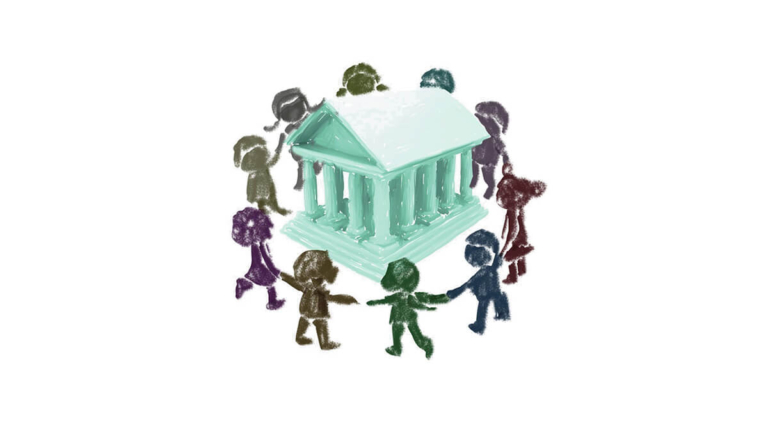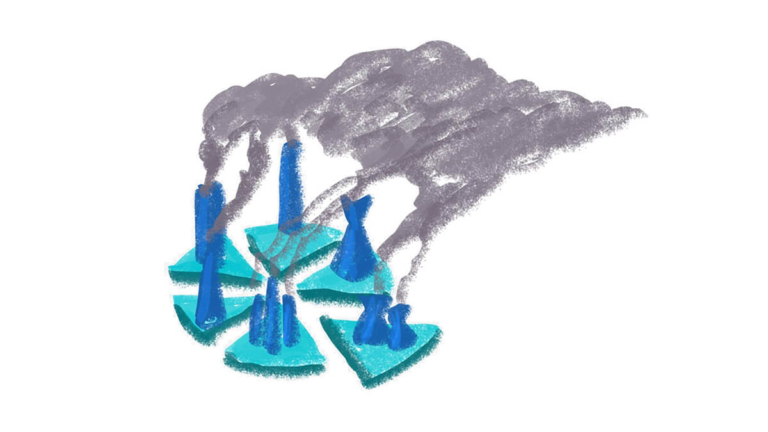Casebook Info
As part of the broader youth climate movement, sixteen youth climate activists filed a petition with the UN Committee on the Rights of the Child, claiming that five countries – Argentina, Brazil, France, Germany, and Turkey – violated the children’s rights and failed to satisfy their obligations under the Convention on the Rights of the Child. The Committee ultimately dismissed the petition on procedural grounds (failure to exhaust domestic remedies), but not before setting some positive precedent for climate litigation – including that countries can be held accountable for the climate impacts experienced by children outside of their territorial boundaries.
- Year Filed 2019
- Year of Most Recent Ruling 2021
- Year of Final Ruling 2021
- Jurisdiction International
- Court Name UN Committee on the Rights of the Child
- Primary Focus Mitigation
- Ruling On Procedure
- Plaintiff(s) 16 youth plaintiffs from around the world
- Respondent(s) Argentina, Brazil, France, Germany, Turkey
- Outcome Ruling for the government respondents
- Organizational leader of the litigation Earthjustice & Hausfeld LLP
Background
Many features of the climate crisis make it a particularly wicked problem. One of them is its relationship to time: the adults of present and past generations, who have benefited enormously from fossil fuel-driven economic growth, won’t be around to experience its gravest harms, though children alive today and future generations will be. Indeed, for this reason, some have labelled climate change as the “greatest intergenerational injustice of all time.”
Young people, however, are fighting back and asserting their right to live on a habitable planet. The youth climate movement – which includes, for example, Extinction Rebellion, Fridays for Future, and Earth Uprising – has picked up immense steam in recent years and has been pushing policymakers and others who control the levers of climate action to adopt more ambitious climate plans and emission reduction targets.
“The climate crisis is a children’s rights crisis. Children have an inalienable right to life under the Convention on the Rights of the Child (the “Convention”). The Convention—the most widely ratified human rights instrument in the world— obligates nations to respect, protect, and fulfill children’s inalienable right to life, from which all other rights flow. Mitigating climate change is a human- rights imperative.”
Petition
As part of this broader movement, sixteen youth climate activists – including the now-famous Greta Thunberg as well as Indian youth activist Ridhima Pandey – filed a petition with the UN Committee on the Rights of the Child, claiming that five countries – Argentina, Brazil, France, Germany, and Turkey – violated the children’s rights and failed to satisfy their obligations under the Convention on the Rights of the Child.
In short, these young petitioners argued that the five respondent countries have knowingly contributed to climate change through the use and support of fossil fuels and fossil fuel infrastructure, have failed to make sufficiently ambitious emission reduction pledges to avert catastrophic warming above 1.5 degrees Celsius, and then have failed to meet even those inadequate pledges. The world is now on track to blow past two degrees Celsius of warming, substantially increasing the likelihood of triggering tipping points in the global climate system, with grave impacts for the youth petitioners. Indeed, the petitioners pointed to the various impacts that they have personally experienced and will experience in their lifetimes as a result of two plus degrees of warming and alleged that these impacts violate their rights to life, health, and culture guaranteed under the Convention on the Rights of the Child. Through their actions and inaction, the respondent countries have contributed to the climate crisis that has and will continue, if not urgently tackled, to violate the petitioners’ rights. As a result, the five countries are responsible for rights violations and for failing to satisfy their obligations under the Convention to which they are signatories.
In September 2021, the Committee on the Rights of the Child handed down the much-anticipated decision – to the part-dismay and part-delight of the youth petitioners and their supporters. Disappointingly, the Committee decided to dismiss the case on procedural grounds – not before, however, issuing some findings on jurisdiction and countries’ obligations to children outside of their territorial boundaries that constitute a very positive development in the case law on climate change.
“By supporting climate policies that delay decarbonization, the respondents are shifting the enormous burden and costs of climate change onto children and future generations. In doing so, they have breached their duty to ensure the enjoyment of children’s rights for posterity, and failed to act in accordance with the principle of intergenerational equity. No state acting rationally in the best interests of the child would ever choose to delay and impose this burden upon them.”
Petition
In order for the Committee to assess the substance of the arguments the petitioners make, it had to find that: (1) it has jurisdiction to hear the petition, which is called a “communication” by the Committee; (2) the petitioners have victim status; and (3) the petitioners have exhausted domestic remedies.
Under the Convention on the Rights of the Child, countries must protect the rights of “each child within their jurisdiction.” The petitioners are from all over the world – including India, the United States, Tunisia, South Africa, Palau, Sweden, and the Marshall Islands – not just the respondent countries (Argentina, Brazil, France, Germany, Turkey). The question then becomes: can these countries be held accountable for climate harms experienced by children outside of their territorial boundaries?
The Committee looks at the Inter-American Court of Human Rights’ 2017 advisory opinion on human rights and the environment for guidance, deciding that it contains the right test to assess jurisdiction. The person whose rights have allegedly been violated falls under the Committee’s jurisdiction when an activity originating within the territory of the respondent country can be shown to have caused, in some capacity, the harms that the victim alleges. The harm-causing activity must be one that the government has effective control over, meaning that the government could stop or alter the activity if it took action to do so.
In this case, the emission of greenhouse gases within a country’s territorial boundaries is the relevant harm-causing activity. When combined with other global emissions, it drives climate change, which, in turn, contributes to or causes the harms – e.g., exposure to drought, displacement from extreme weather events, and contraction of climate-exacerbated diseases – that the petitioners argue violate their rights. And the Committee finds that the respondent governments do have effective control over the emissions within their territories, because of their power to regulate these emissions.
Importantly, the Committee offers a rebuke to a common defense offered by governments in climate cases: contrary to the governments’ arguments, the collective nature of climate change does not absolve governments of their individual responsibility for the harms experienced by children – “whatever their location” – that result from the emission of greenhouse gases within their territories. This finding, according to the Committee, results from the principle of ‘common but differentiated responsibilities.’
All of this means, in short, that governments can be held responsible for harms generated by emissions within their territories but experienced by children outside of their territorial boundaries. This is the key legal development of this case.
Next, the Committee turns to victim status. The Committee finds that the petitioners sufficiently demonstrated that their rights have been impaired and will continue to be impaired by the emission of greenhouse gas emissions within the respondent countries’ boundaries and that such impacts on their rights was reasonably foreseeable by the respondent governments, who have been aware of the science of climate change for decades. The youth petitioners can thus be considered victims, a requirement for the consideration of communications sent to the Committee.
And finally, the Committee ends its analysis with the exhaustion of domestic remedies, which refers to the requirement that petitioners use the administrative and judicial procedures available at the national level to present their claims before bringing them to the Committee. The Committee references judicial bodies and administrative offices where the petitioners could have brought their claims but did not. Though the petitioners would not be required to pursue legal avenues that would be futile – as would be the case, for example, when well-established law would inevitably mean their case would be dismissed – mere doubts that such efforts would lead to an unfavorable outcome do not, according to the Committee, relieve the petitioners from the requirement to pursue them. On that basis, the Committee found the communication inadmissible and dismissed it without further analysis.
“Regional leaders and major economies—like the respondents—have a unique responsibility to mitigate climate change, because they exercise an outsized influence. The G20, to which each respondent is a member, make up 84% of all global emissions. If the G20 does not decarbonize at a rate and scale established as necessary by available science, collective climate action will unravel.”
Petition
So, the outcome of Sacchi was mixed, resulting in some favorable findings that can contribute to the success of other climate cases, but ultimately ending in dismissal. Nevertheless, Sacchi v. Argentina still illustrates the powerful voice that youth have in highlighting the urgency and injustices of climate change and demanding that countries do more to avert climate disaster.
- 5 The number of countries named as respondents in the petition
- 12 The number of countries the petitioners call home
- Arts. 3, 6, 24, & 30 The articles of the Convention on the Rights of the Child that the petitioners alleged the respondent countries violated as a result of their actions and inactions contributing to climate change
- 1,1 The current degrees Celsius increase of the average global temperature since pre-industrial times
Strategies
Focusing on youth and future generations

Younger and future generations play an essential role in the case, including as petitioners and by making youth-oriented claims and arguments.
Applying a developed body of law in the context of climate change

The case ultimately hinged on whether the petitioners had “exhausted domestic remedies.” The case law and commentary on the exhaustion of domestic remedies – both in the Committee on the Rights of the Child and in judicial bodies and courts more generally – is extensive. This precedent was applied in this case to support the conclusion that the petitioners had not exhausted domestic remedies as required under the Convention on the Rights of the Child, therefore leading to the petition’s dismissal.
Affirming country / corporate responsibility for their ‘fair share’ of emission reductions, regardless of the actions of other countries or corporations.

In its discussion of jurisdiction, the Committee noted that the collective nature of climate change does not absolve countries of their individual responsibility for harms to children generated by emissions occurring within the countries’ territorial boundaries.
Take-aways
Legal action brought by youth can underscore the moral urgency of acting on climate change. Children and youth bear no moral responsibility for the current climate crisis, but they will disproportionately bear the harms of climate change. Cases spearheaded by youth can help draw attention to the moral consequences of failing to address climate change.
Following procedural requirements is critical for success. Science, ethics, and developments in climate law were all on the youth petitioners’ side, if only they could get the Committee to actually review the merits of their petition. They couldn’t, however, because they didn’t satisfy the procedural requirements for bringing a communication to the Committee. The lesson? Procedural requirements can pose serious barriers for plaintiffs, and it’s worth ensuring – when possible – that one has paid sufficient attention to these requirements.
Impacts
This case received substantial media coverage, particularly when the petition was first filed and when the Committee’s decision was issued. The media coverage indicates that this case helped draw attention both to the youth climate movement and the particular harms that climate change imposes on children and young adults. In other words, this case illustrates that youth-driven climate actions can draw attention to the immorality of present adult generations’ attempt to stick young and future generations with the climate bill.
Additionally, this case concretely developed human rights and climate change law, in particular with its analysis finding that countries can be held accountable for the harms resulting from GHG emissions within their territory but felt by children outside of their territory. Human rights and climate change practitioners and advocates have picked up on the legal developments advanced in this case. Wider audiences have, too, as demonstrated by the media coverage of the Committee’s decision.
